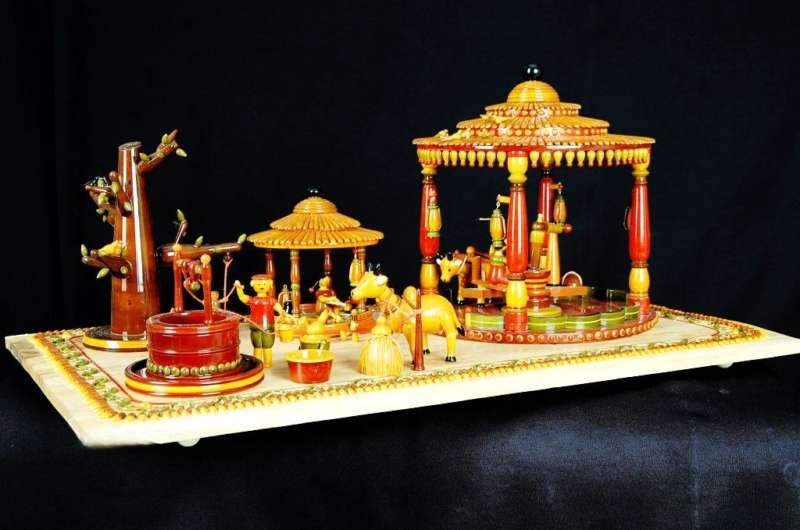In a remote corner of Vizag district, by the hillstream of Varaha, is the village of Etikopakka. Known for its handmade wooden lacquer artifacts, here toy making is not just a way to earn money, it is a way of life. Having attained the GI tag, today many artisans and multiple households work on it. Named after the village itself, Etikoppaka toy making is also called turned wood lacquer craft as well, from the style of its craftsmanship.
History indicates that this art form has been practiced for over 400 years now. With each generation passing on the knowledge of the craftsmanship to the next, little has changed in the style of crafting these products. The Ankudu wood continues to be used, still preferred for its light colour. The dye sticks made using a lacquer base with natural colours is still prevalent too. The hand-operated lathe is however now mechanised, enabling a wider range of products to be made.
With the streets of the village in Vizag dotted with many small centers that sell these toys, plenty of variety meets the eye. From small ‘Kumkum-barinis’ to the ‘Bongaralu’ which have been the earliest products here, to decorative pieces, pen stands, mobile phone stands, and jewellery can be seen. It is a fascinating process to watch them being made as well. Chinnaya Chari, a National Award winning artisan, operates a lathe and then as the wood rotates, he uses customised tools to chisel it into the desired shape. Once the shape of the wooden artifact is ready, he smoothens it with sandpaper, and then the process of applying colour begins. Colours are transferred via dye sticks created out of lacquer which is melted with the required natural dyes. Thus while turmeric is used to obtain yellow, the bright reds are obtained from Jaffra seeds. Also, some colours like black take longer to be readied, and require pieces of iron and jaggery to be left in a pot of water for a month, before they can be further processed to obtain the dye. Roots, barks and other sources are also used to get the colours. Once the artifacts are coloured, leaves of screwpine are used to polish the wooden objects for that alluring shine and finish.
While the finished products are bright and cheerful, all is not perfect with the art form. Thus while some artists like Chinnaya Chari use natural colours, many other artisans are shifting to chemical dyes, as they are much easier to use. Wood is also not as easy to procure as it once was. Also, with a lack of many growth opportunities, the next generation no longer wants to learn the craft, as it doesn’t offer monetary benefits. With many families still devoted to this work, the entire process of creating products at Etikoppaka is energy intensive, yet done with precision and love. Things for these artisans, however, would only be perfect, if they can reap monetary benefits.
How to get there?
The best way to get there is via road. A two-hour drive from Vizag via NH16 can take you to the destination. Head there in the morning hours to make the most of the day.










Discussion about this post